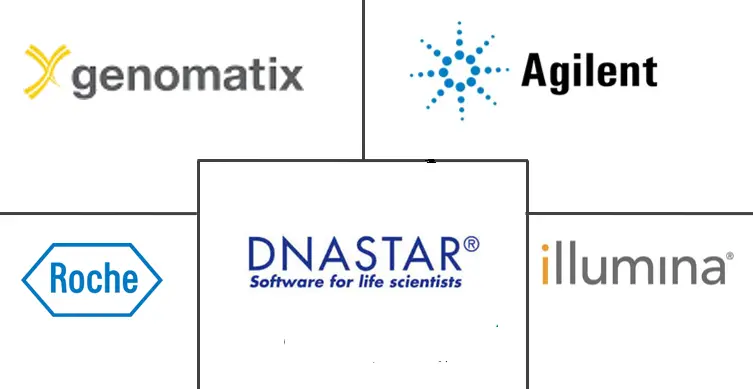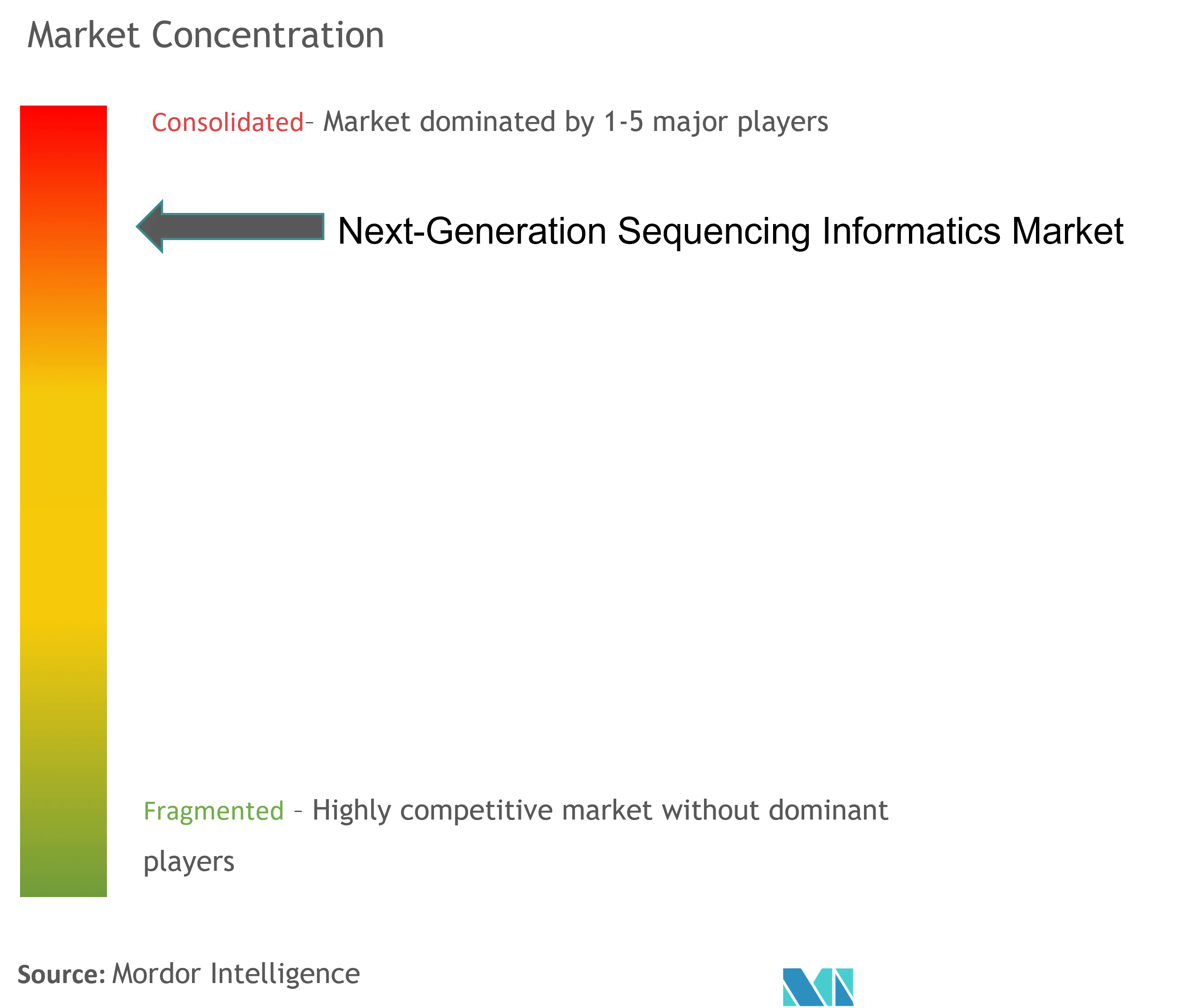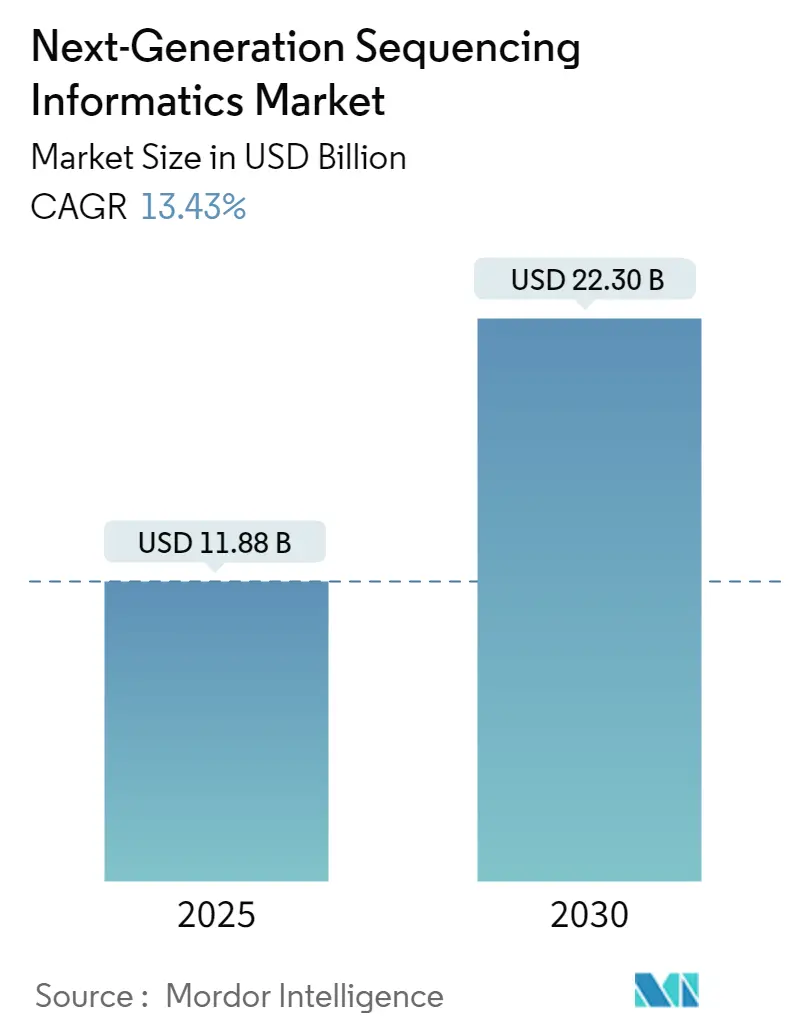
Next-Generation Sequencing Informatics Market Analysis
The Next-Generation Sequencing Informatics Market size is estimated at USD 11.88 billion in 2025, and is expected to reach USD 22.30 billion by 2030, at a CAGR of 13.43% during the forecast period (2025-2030).
Next-generation sequencing is considered a valuable tool in the characterization and identification of the SARS-CoV-2 virus. The main drawback of qPCR, despite its widespread usage in coronavirus identification and quantification during the pandemic, is that it is incapable of accurately detecting alterations or mutations in the viral genome. Thus, NDS technologies play a vital role in studying the mutations in the viral genome and their impact on human health. For instance, an article published in the Journal of Frontiers in Medicine in March 2021 showed an extensive interaction between the gut microbiome and the SARS-CoV-2 virus. The microbiome sequencing services have mainly helped the research by studying the gut microbiome at varying stages of infection. Thus, the increased use of microbiome sequencing services during the COVID-19 pandemic increased the demand for NGS services. In this context, NGS plays a vital role in studying the evolving process of the SARS-CoV-2 virus and the subsequent impact of these changes on the global population and environmental health, along with tracking the transmission of the virus globally. Owing to the increasing NGS research and development activities and bioinformatics in the development of diagnostic tools or effective therapeutics for COVID-19, the market is likely to continue its significant growth rate during the forecast period.
The major factors driving the growth of the next-generation sequencing informatics market are increasing clinical applications of NGS, technological advancements in NGS informatics tools, growing preference toward personalized medicines and early disease diagnosis, increasing demand for NGS services, and rising investment by key players. For example, in November 2021, BMJ Publishing Group Ltd published an article stating that whole exome sequencing is now available for highly selected patients for the routine diagnosis of rare childhood genetic diseases.The article also reported that next-generation sequencing allows hundreds or thousands of genes to be sequenced in a short period of time at a much lower cost. Furthermore, in July 2022, the World Health Organization (WHO) reported that 37.7 million HIV cases were recorded globally. Due to the rise in the prevalence of these disorders and the information that these genomic sequencing methods provide on genetic mutations that can cause disease, the market for RNA sequencing will eventually increase as a result of growing demand.
Furthermore, the key market players' increasing product innovation and collaboration support the market's growth over the forecast period. In January 2022, Illumina Inc. and Nashville Biosciences LLC, a wholly-owned subsidiary of Vanderbilt University Medical Center (VUMC), entered a multi-year agreement to accelerate medicine development through large-scale genomics and the establishment of a preeminent clinical genomic resource using Illumina's next-generation sequencing (NGS) platforms. As a result, increased collaboration in improving NGS and launches are expected to drive overall demand for NGS informatics, resulting in high market growth over the forecast period.
But the lack of skilled technicians for NGS informatics services and problems with storing and integrating data are likely to slow the growth of the market over the next few years.
Next-Generation Sequencing Informatics Market Trends
Genetic Screening Segment, by Application, is Expected to Experience the Fastest Growth in the Market
In genetic screening, the NGS technology is highly useful in identifying monogenic diseases with locus heterogeneity, such as blindness, deafness, movement disorders, mitochondrial disease, hereditary cancers, etc. It generates a large amount of sequencing data in a massively parallel manner to provide a differential diagnosis for the patient. There are several companies in the market that provide NGS services for a range of genetic disorders and screening of DNA, RNA, and specialized samples. For instance, according to the research article published in Genetics in Medicine 2021 by M. Mummmen, all the clinical genetic testing was restricted, telemedicine-based consultations and counseling were adopted globally, and most of the genetic testing services have adopted virtualization, along with home testing kits and home sample collection, to combat the transmission of the SARS-CoV2 virus. This might have further impacted the market's growth during the pandemic.
Additionally, NGS technologies have been extensively harnessed in oncology screening, and the high incidence of cancers worldwide is expected to drive the studied market. The increasing burden of cancers worldwide and the growing awareness among the global population of preventive diagnosis and personalized medicine are the major factors driving the cancer segment market over the forecast period. For instance, according to the American Cancer Society's July 2021 forecast, in 2021, 1,898,160 new cancer cases are projected to occur in the United States. Additionally, the new cancer incidence is estimated to reach 30.2 million by 2040, as per the International Agency for Research on Cancer (IARC). Thus, genetic screening aids in providing information on whether cancer runs in the family and the risk factors associated with the development of cancers in the future among individuals with a family history of cancer.
Thus, given the aforementioned factors, the genetic screening segment is expected to grow significantly over the forecast period.
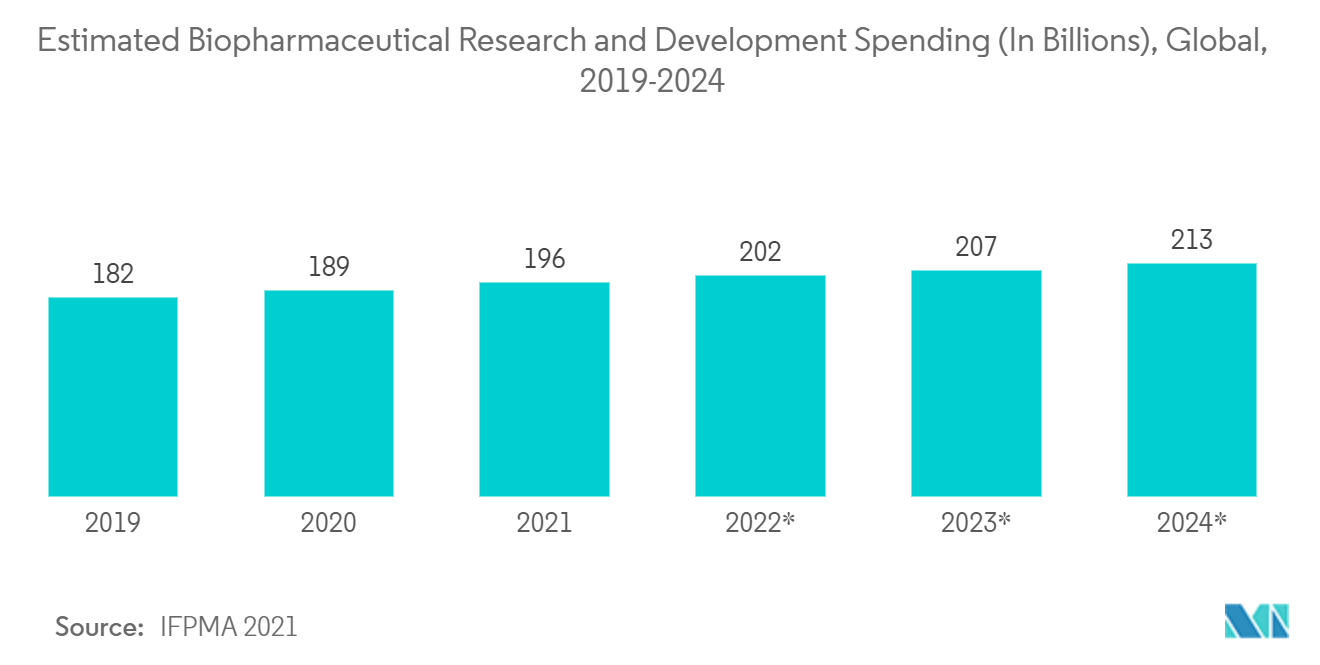
North America Dominates the Market and Expected to do Similar Over the Forecast Period
North America is expected to dominate the overall market throughout the forecast period. The high per capita healthcare expenditure and high prevalence of target diseases are contributing to the growth of the market studied in the region. According to the Cancer Facts & Figures 2022 data published by the American Cancer Society, there will be an estimated 1.9 million new cancer cases diagnosed in the United States in 2022. Hence, the growing prevalence of chronic diseases is expected to increase the demand for NGS informatics, thus driving the studied market's growth.
Additionally, the high concentration of major regional players, along with high product approvals and launches, is expected to be a significant factor for the studied market in the area. For instance, in October 2021, F. Hoffmann-La Roche Ltd. launched the AVENIO Tumor Tissue CGP Kit, a comprehensive genomic profiling kit, to make tailored cancer research more accessible. This kit provides comprehensive genomic profiling of solid tumors from formalin-fixed paraffin-embedded (FFPE) tissue samples. Thus, with increasing strategies taken by key regional players, the NGS informatics market is expected to grow significantly over the forecast period in North America.
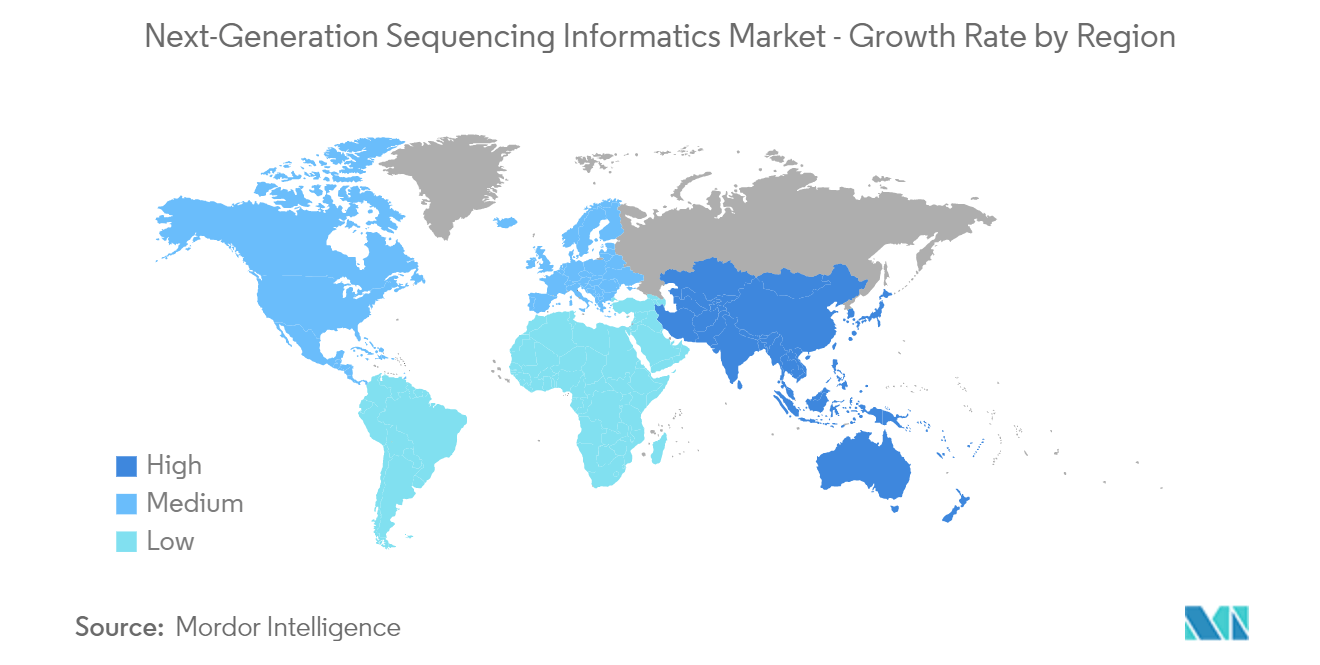
Next-Generation Sequencing Informatics Industry Overview
The Next-Generation Sequencing Informatics Market is consolidated in nature due to the presence of a few companies operating globally as well as regionally. The competitive landscape includes an analysis of international and local companies that hold market shares and are well known, including Agilent Technologies Inc., F. Hoffmann-La Roche Ltd., Intrexon Bioinformatics Germany GmbH, and Illumina Inc., among others.
Next-Generation Sequencing Informatics Market Leaders
-
Intrexon Bioinformatics Germany GmbH
-
Illumina Inc.
-
DNASTAR Inc.
-
Agilent Technologies Inc.
-
F. Hoffmann-La Roche Ltd.
- *Disclaimer: Major Players sorted in no particular order
Next-Generation Sequencing Informatics Market News
- May 2022: NanoString Technologies, Inc. announced a seamless, cloud-based workflow that improves customers' spatial data analysis experience using Illumina NextSeq 1000 and NextSeq 2000 sequencing systems and the GeoMx Digital Spatial Profiler.
- March 2022: ARUP launched a new bioinformatics platform for better, faster next-generation sequencing test results.
Next-Generation Sequencing Informatics Industry Segmentation
As per the scope of this report, NGS is a technology in which millions of DNA strands can be sequenced through massive parallelization. This technique is also known as high-throughput sequencing. The low cost, high accuracy and speed, and precise results even from low sample inputs are the main advantages NGS offers over Sanger's sequencing method. Products and Services (NGS Informatics Services), Application (Drug Discovery, Genetic Screening, Precision Medicine, and Other Applications), End User (Hospitals and Clinics, Academic and Research Institutes, Pharmaceutical Companies, and Other End Users), and Geography (North America, Europe, Asia-Pacific, Middle East and Africa, and South America) are the segments of the Next-generation Sequencing Informatics Market. The market report also covers the estimated market sizes and trends for 17 different countries across major regions globally. The report offers the value (in USD million) for the above segments.
| By Products and Services | NGS Informatics Services | ||
| Data Analysis and Management Tool | Storage and Computing Tool | ||
| Laboratory Information Management System (LIMS) | |||
| Data Interpretation and Reporting Tools | |||
| Primary and Secondary Data Analysis Tools | |||
| By Application | Drug Discovery | ||
| Genetic Screening | |||
| Precision Medicine | |||
| Other Applications | |||
| By End User | Hospitals and Clinics | ||
| Academics and Research Institutes | |||
| Pharmaceuticals Companies | |||
| Other End Users | |||
| Geography | North America | United States | |
| Canada | |||
| Mexico | |||
| Europe | Germany | ||
| United Kingdom | |||
| France | |||
| Italy | |||
| Spain | |||
| Rest of Europe | |||
| Asia-pacific | China | ||
| Japan | |||
| India | |||
| Australia | |||
| South Korea | |||
| Rest of Asia-pacific | |||
| Middle East and Africa | GCC | ||
| South Africa | |||
| Rest of Middle East and Africa | |||
| South America | Brazil | ||
| Argentina | |||
| Rest of South America | |||
Next-Generation Sequencing Informatics Market Research FAQs
How big is the Next-Generation Sequencing Informatics Market?
The Next-Generation Sequencing Informatics Market size is expected to reach USD 11.88 billion in 2025 and grow at a CAGR of 13.43% to reach USD 22.30 billion by 2030.
What is the current Next-Generation Sequencing Informatics Market size?
In 2025, the Next-Generation Sequencing Informatics Market size is expected to reach USD 11.88 billion.
Who are the key players in Next-Generation Sequencing Informatics Market?
Intrexon Bioinformatics Germany GmbH, Illumina Inc., DNASTAR Inc., Agilent Technologies Inc. and F. Hoffmann-La Roche Ltd. are the major companies operating in the Next-Generation Sequencing Informatics Market.
Which is the fastest growing region in Next-Generation Sequencing Informatics Market?
Asia-Pacific is estimated to grow at the highest CAGR over the forecast period (2025-2030).
Which region has the biggest share in Next-Generation Sequencing Informatics Market?
In 2025, the North America accounts for the largest market share in Next-Generation Sequencing Informatics Market.
What years does this Next-Generation Sequencing Informatics Market cover, and what was the market size in 2024?
In 2024, the Next-Generation Sequencing Informatics Market size was estimated at USD 10.28 billion. The report covers the Next-Generation Sequencing Informatics Market historical market size for years: 2021, 2022, 2023 and 2024. The report also forecasts the Next-Generation Sequencing Informatics Market size for years: 2025, 2026, 2027, 2028, 2029 and 2030.
Our Best Selling Reports
Next-Generation Sequencing Informatics Industry Report
Statistics for the 2025 Next-Generation Sequencing Informatics market share, size and revenue growth rate, created by Mordor Intelligence™ Industry Reports. Next-Generation Sequencing Informatics analysis includes a market forecast outlook for 2025 to 2030 and historical overview. Get a sample of this industry analysis as a free report PDF download.

